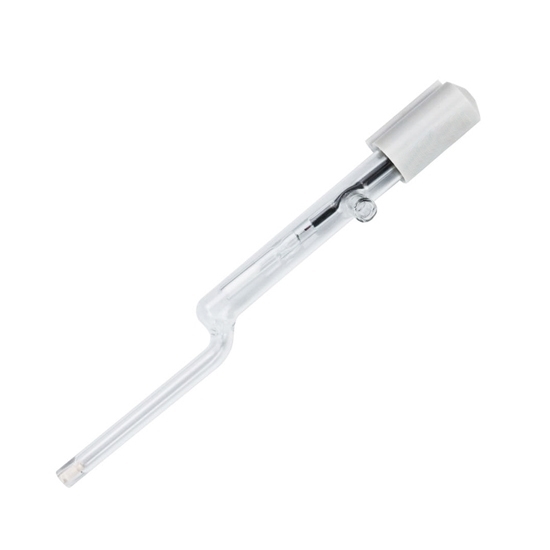
SCE Reference Electrode
from
$100.89
Ex Tax: $100.89
- Stock: In Stock
- Model: RDDLZ-RE-232
- Weight: 1.00
- SKU: RDDLZ-RE-232
Available Options
Create unlimited custom product blocks and display them in accordions or tabs or open blocks. Each block can be assigned to all products at once or specific products according to advanced criteria.
Create unlimited custom product blocks and display them in accordions or tabs or open blocks. Each block can be assigned to all products at once or specific products according to advanced criteria.
Saturated calomel electrodes (SCEs) have a well-defined and reproducible potential, which simplifies calibration in electrochemical experiments. They are widely used in various applications, including pH measurements, corrosion studies, and standardization of other electrodes.
Specification
| Model | RDDLZ-232 |
| Electrode Type | Saturated Calomel (Hg/ Hg2Cl2) Reference Electrode |
| Reference Type | Saturated Calomel Single Salt Bridge Type |
| Salt Bridge Material | Ceramic Sand Core |
| Filling Liquid | Saturated KCl |
| Shell Material | Glass |
| Temperature Range | 5℃~55℃ |
| Dimension | φ12*120mm |
| Connector | U-Shaped Fork Piece |
Dimension
Application
Tips: How to calibrate a SCE reference electrode?
To calibrate a saturated calomel electrode (SCE) reference electrode, follow these steps:
- Prepare Solutions: Create a saturated potassium chloride (KCl) solution and a 0.01 M KCl solution.
- Assemble Setup: Connect the SCE to a high-impedance voltmeter. Submerge the SCE in the saturated KCl solution.
- Stabilize: Allow the system to stabilize, ensuring the SCE junction is immersed in KCl for at least 30 minutes.
- Adjust Potential: Adjust the potential of the SCE to the accepted standard potential, usually +0.241 V versus the standard hydrogen electrode.
- Measure Against Standard: Immerse the SCE in the 0.01 M KCl solution and measure its potential. Compare this reading to the standard potential to identify any deviation.
- Corrective Action: If needed, adjust the potential of the SCE to match the standard potential, ensuring accurate and reliable readings in subsequent electrochemical experiments.
Builder in Product TAB
NEW! Since Journal 3.2, the much improved T.A.B (Tabs Accordion Blocks) system supports the page builder inside the tab content. Unlimited Blocks, Tabs or Accordions with any HTML content or the builder interface (supporting custom rows/columns/modules) can be assigned to any individual product or to certain groups of products, like entire categories, brands, products with specific options, attributes, price range, etc.
You can indicate any criteria via the advanced product assignment mechanism and only those products matching your criteria will display the modules.
Also, any module can be selectively activated per device (desktop/tablet/phone), customer login status and other criteria. Imagine the possibilities.
